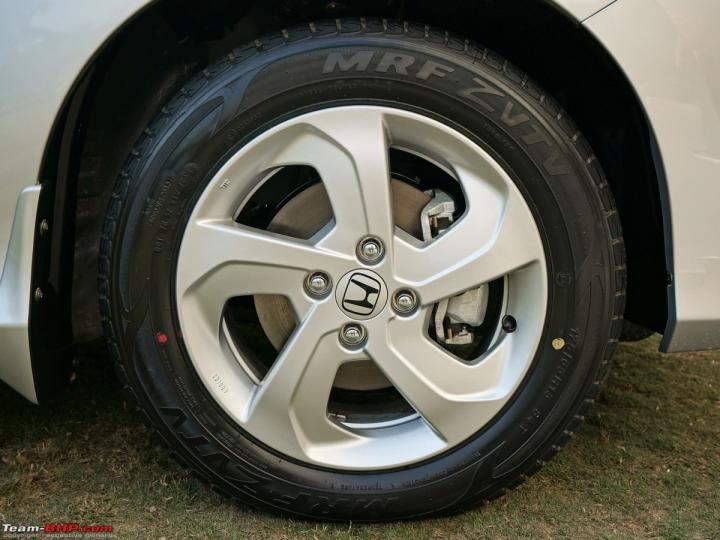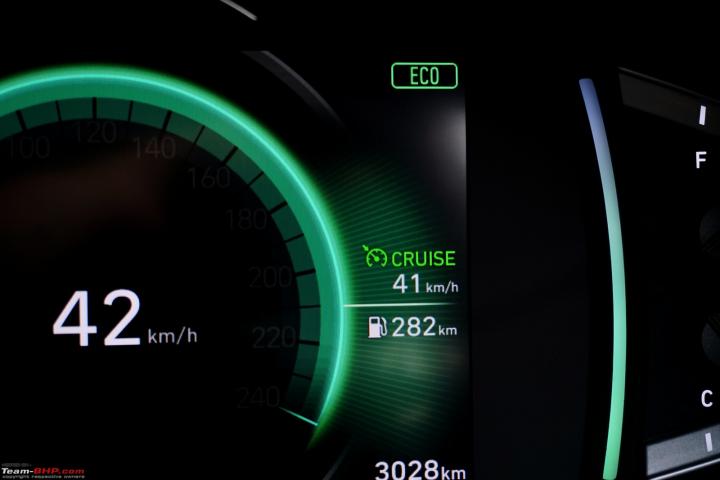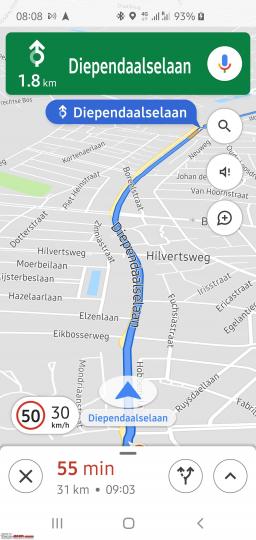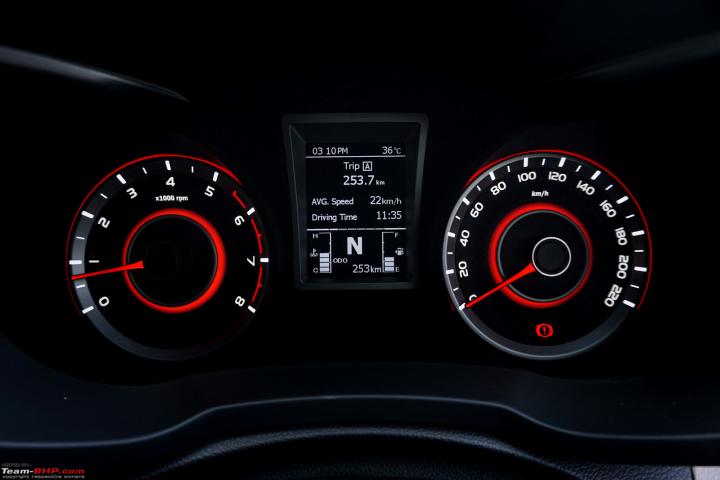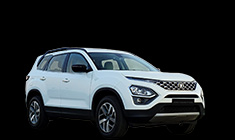News
My failed DIY attempt to activate low fuel indicator on my 2006 Swift
With the help of my friend who is into electronics, we soldered the led onto the motherboard. Powered up the speedometer but to our dismay, it did not light up.
BHPian Ashtoncastelino recently shared this with other enthusiasts.
One day I paid close attention to all the warning light symbols printed on my speedometer. I noticed near the fuel gauge there was a low fuel light symbol present but never saw it glow since I always keep my tank above the 25% mark.
Searched on the internet and saw few international Swifts with low fuel light glowing and thought why isn't it present in the Indian variant?
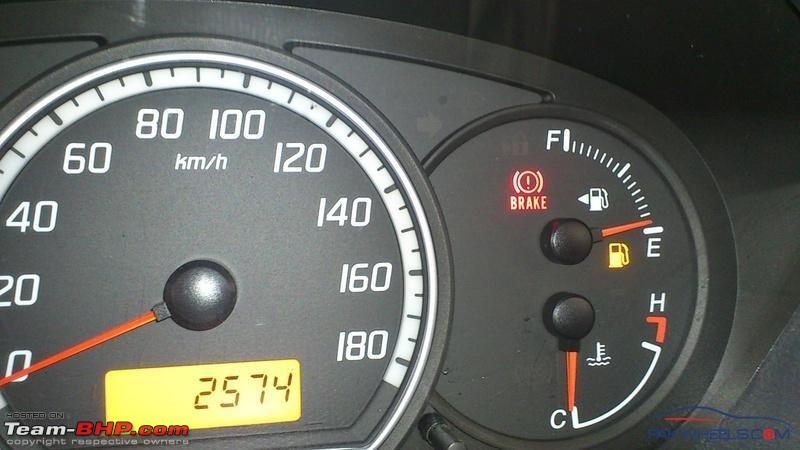
International Swift Speedometer featuring the Low Fuel Light.
I checked for the low fuel light to pop up when the gauge was at E but still never lit up. Checked on the forum and asked few BHPians if this was a feature available only in the ZXi/ZDi variants or not. No one had seen this light glow even when fuel gauge was at the E mark. Ran across few threads in the forum as well.
To begin my experiment I managed to get a ZXi Swift speedometer with its connector from the scrapyard:

I removed the glass and the needles to see the circuit board. I also compared the International Swift speedometer diagram and Indian Swift speedometer diagram and it was the same. I noticed on the motherboard there was no led light to illuminate the low fuel light symbol:
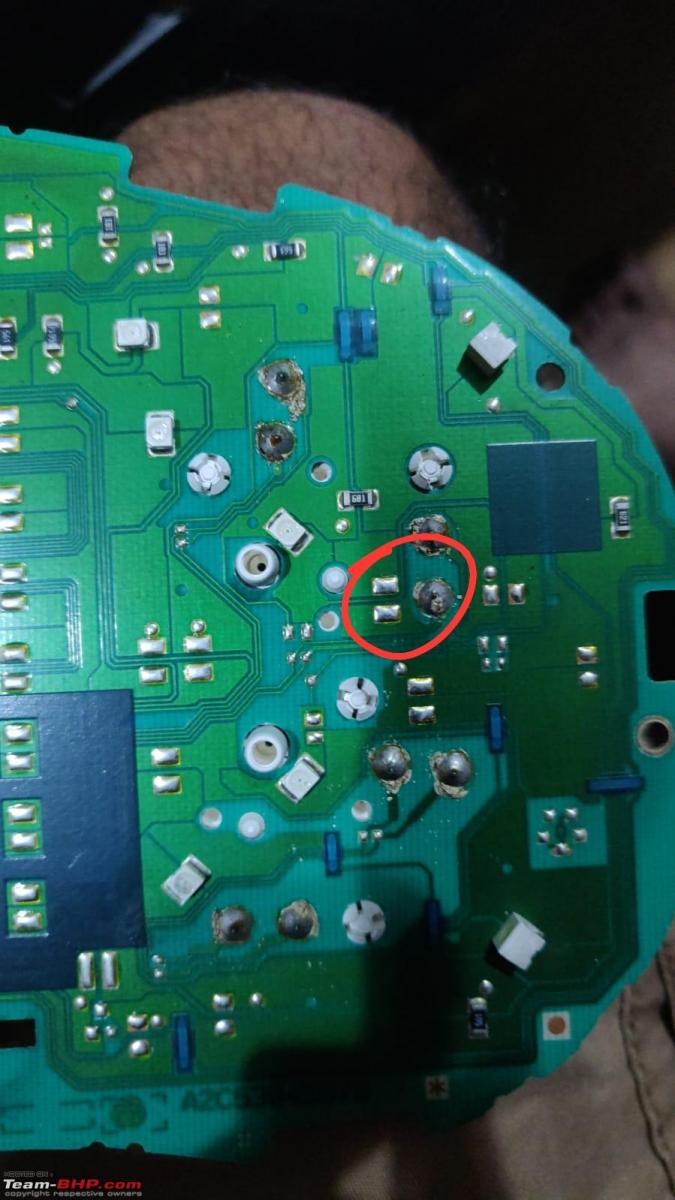
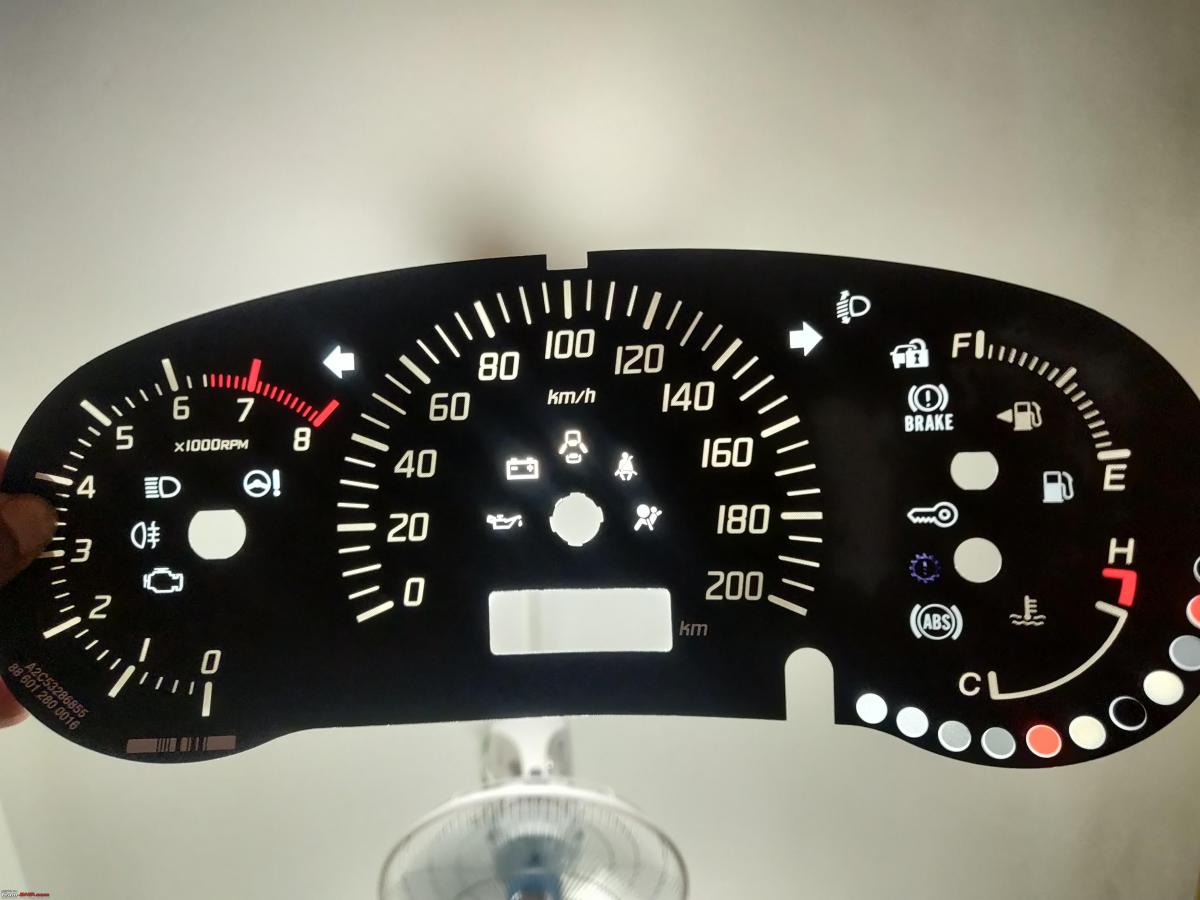
All the warning light symbols available on the speedometer.
Thought why not take an LED and solder it to that point and see if the low fuel light comes on if fuel gauge is at E?
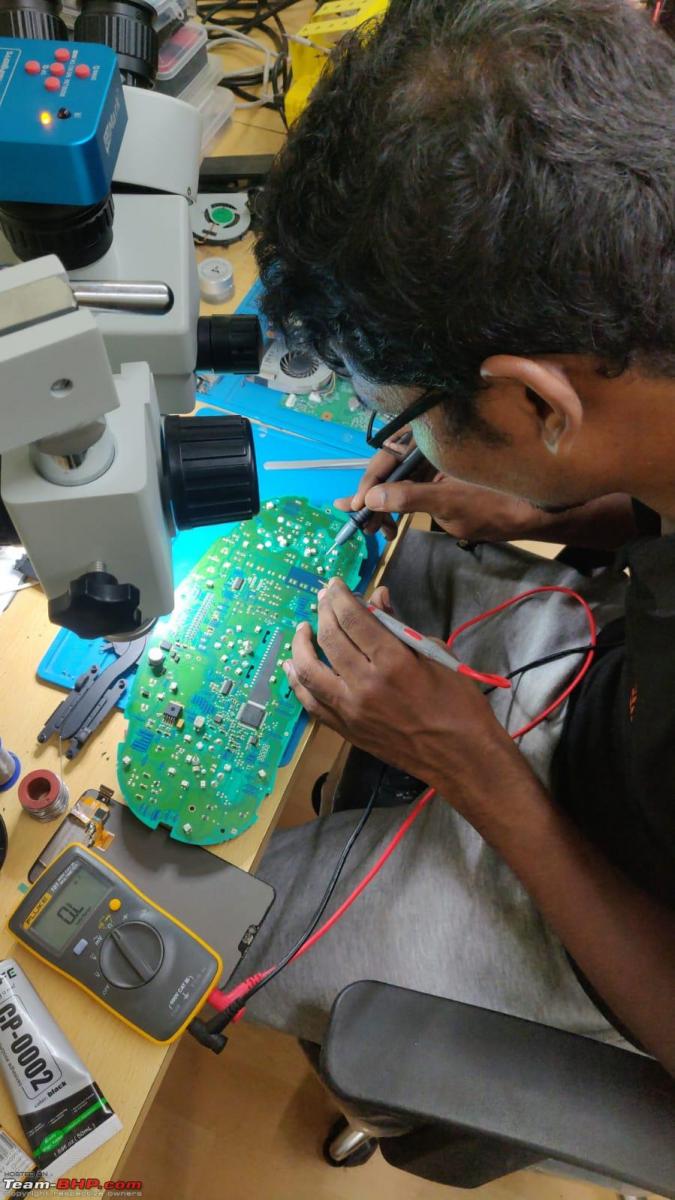
With the help of my friend who is into electronics, we soldered the led onto the motherboard. Powered up the speedometer but to our dismay, it did not light up. So my friend told me to try it on the car with the tank at E. Tested it on my car with tank at almost E but still no light. After asking few other friends who are into electronics, they mentioned the micro-controller and LED output driver might not have this feature even though the circuit is present. Sadly due to this the experiment had hit the wall.
How cheap of Maruti to even think about cost cutting with the micro-controller and LED output driver when the circuit board has it supported? Though this is albeit a small requirement, it could have been integrated beautifully as this is the only small difference between the international Swift speedometer and Indian Swift speedometers. In the future if I come across an international Swift speedometer, I might swap the circuit board.
Regards,
Ashton Castelino.
Check out BHPian comments for more insights and information.
News
Differences: Maximum speed rating of OEM tyres vs the car's top speed
The OEM tyre choice will usually have a speed rating of more than the rated top speed of the car, as per the spec sheet of the car.
BHPian prash2606 recently shared this with other enthusiasts.
Hello BHPians,
This is my first post and it comes with a curiosity for which I believe I couldn't find an answer in the posts. Please pardon me if a response already exists.
Query: At times I've observed that the top speed mentioned on the car speedo meter is northwards of 180kmph even in a hatch back or a <10lacs sedan, however, the tyres provided by manufacturer may not be a suitable match for those speeds, even though the car is not capable to climb up to those theoretical speeds mentioned on the meter. Has anyone come across such scenarios on any make/model and if yes, then can we legally pull up the dealer/manufacturer to provide the tyres more suitable for such acclaimed theoretical speeds?
Here's what BHPian Amrik Singh had to say on the matter:
Suitability or adaptability of tyres cannot be related to the car only. Another factor is the road and temperature. The road surfaces are of different types. The manufacturers test their products on their own tracks which are not exactly the same elsewhere. So any attempt to hold them liable for this anomaly will probably fall flat.
Here's what BHPian Dr.AD had to say on the matter:
The top speed marked on the speedometer has no meaning. That is not the top speed of the car. Forget the tyre speed rating, the car itself is often not capable of reaching that speed. The car manufacturer does not even claim that the car will reach that speed. They provide car's rated top speed in the spec sheet, which is often a number much below the top marking in the speedometer dial.
The OEM tyre choice will usually have a speed rating of more than the rated top speed of the car, as per the spec sheet of the car. And thus, there is nothing wrong with this practice. The top number on the speedometer has no bearing on this equation, and has no meaning as such.
Here's what BHPian Jeroen had to say on the matter:
Other members have already explained how this works. Cars just don’t reach the maximum speed of the speedometer. But they do have a maximum speed obviously. And it would be safe practice to have tyres fitted that are suitable for that speed.
Whether that is a legal requirement in India I don’t know, I am sure other members will chip in. In some countries it is a legal requirement in some it is not.
In my home country it isn’t anymore. We did away with that requirement many years ago. So my Jaguar can do speeds in excess of 265 Km /h. So I like to have the appropriate speed rated tires, just because occasionally I have been known to hit that speed on the German Autobahn.
I am not sure why the Dutch government did away with this rule. I am a liberal at heart, so the less rules and regulation and keeping people responsible for their own actions is great. But most people would not have a clue there is even such a thing as a speed rating for their tires. Ensuring with a simple rule/law that the speed rating of the tires need to match the car maximum speed seemsvery simple and straightforward to me. Almost impossible to make mistakes.
But I could fit much lower speed rated tires and save myself an awful lot of money. Up to my own discretion and responsibility. I do know that certain insurers require the speed rating of the tires fitted to match the maximum speed of the vehicle. Usually, on super cars and so on.
Irrespective it is advisable to have all four tires the same speed rating. If you have two sets with a different speed rating, put the ones with the lowest rating on the front wheels. That will ensure you will have the best grip on the rear wheels.
Here's what BHPisn Sankar had to say on the matter:
The car manufacturer always fit a tyre with a speed rating that is rated for the maximum speed vehicle is capable of doing (not the speedometer max value).
For eg:
- Most Maruti Suzuki 1.2K engine cars will do a true top speed of 175KPH, the Apollo tyres fitted as OE are T rated which is good for 190KPH. The numbers printed on the speedometer may go beyond 200 but it is irrelevant.
- Innova Crysta will do a true top speed of 180KPH and the bridgestone tyres fitted as OE are H rated which is good for 210KPH. Highest value on the speedometer is 200.
For any new car you can find out its manufacturer specified true top speed (from the specifications or other sources) and find the speed rating of the OE fitted tyre (which is usually there on the tyre itself - T, H, V, W etc) and check if they are under or over rated for the speeds capable. Don't go by max numbers displayed on the speedometer and compare that to the OE tyre its pointless.
Check out BHPian comments for more insights and information.
- Tags:
- Indian
- Tyres
- car tyres
- Top Speed
- speedometer
News
Advice: Adding a tachometer to a base variant's instrument cluster
Reason I'm asking is that a friend of mine is willing to import a cluster for a Chevrolet Spark which has a tachometer on it from Europe for his 07' Spark LT.
BHPian IronDrago56 recently shared this with other enthusiasts:
Hi,
Just curious. Would it be possible to "Upgrade" an instrument cluster?
For example, someone owns a Swift LXI which only has a speedo, can the temp and fuel guage added to the cluster from a VXI which has a tachometer?
Reason I'm asking is that a friend of mine is willing to import a cluster for a Chevrolet Spark which has a tachometer on it from Europe for his 07' Spark LT. This is from a 2013 Chevrolet Matiz (Which I believe is the Spark but renamed for the EU markets). And the speedo is marked in kph.
Would like some advice on this, thanks.

Here's what BHPian DicKy had to say on the matter:
Sure.
We have a few threads here of BHPians with Ecosports doing DIY stuff. For your reference: Link 1, Link 2, Link 3.
Also came across this shop upgrading stuff for base model Innovas.
For basic instrument clusters that have only a tacho as extra, guess just have to look at the connection for engine speed reading. More of digital stuff clusters will need software tweaking.
Here's what BHPian audioholic had to say on the matter:
This depends on the interface the instrument cluster has with the rest of the car. If the instrument cluster reads individual signals from the vehicle through separate connections, like a separate vehicle speed signal, separate engine speed signal and so on, then you might have to also take care of the wiring part. However if the instrument cluster mainly communicates with CAN, then there need not be any additional wiring done. Given that this is a 2007 car, I doubt this hence you might have to check the wiring schematics as well.
Most probably the engine speed signal is obtained from the ECU till the BCM of the car and the wiring to the cluster will be absent. From the BCM the ESS signal would be distributed to some other components like the power steering controller or ABS if present. I believe none of the Chevy spark variants had a tacho in the cluster from factory, hence this link to the cluster might be missing.
Here's what BHPian Blooming Flower had to say on the matter:
Yes, you can add it. Irrespective of the instrument cluster having rpm signal provision or not, you can add it by tapping the rpm voltage signal from the ECU or PSU. I have done it recently for my car without any issue and the instrument cluster does not have any rpm signal pin. Picture attached:
Check out BHPian comments for more insights and information.
News
Difference in cruise control speed and Google Maps GPS speed
I had set the CC at 110 kmph, and just out of curiosity, tried to cross check the speed with GPS, which was showing actual speeds between 95-100 kmph.
jigar1791@gmail recently shared this with other BHPians.
Background -
I drive a 2018 Ciaz Petrol MT. Recently, I was on a 500 km drive from Mumbai to Ahmedabad, and had used the cruise control feature a few times on the NH, especially on the Vadodara-Ahmedabad Expressway (National Expressway-1).
Problem Statement -
I observed a huge difference in the actual speed while using the cruise control (here after: CC) and while verifying it with Google Maps (here after: GPS). I had set the CC at 110 kmph, and just out of curiosity, tried to cross check the speed with GPS, which was showing actual speeds between 95-100 kmph.
I also tried to measure my speed with a GSRTC’s Volvo, as I knew it’s speed was restricted to 95 kmph, and I somehow felt I took longer to overtake the Volvo (I’m at 110, Volvo at 90-95).
Conclusion -
This makes me wonder if the CC speed set function shows reduced speed than it’s set at? Or is there something else? Have fellow Ciaz owners/CC users made a similar observation?
Here's what paragsachania had to say on the matter:
This has nothing to do with Cruise Control but this is exactly how the numbers are displayed/pointed in the speedometer console, which is always higher than the GPS speeds which is a measurement of true speed.
This is mostly the case with almost all the cars, few with a very high variance too. Ideally, there is a difference (speedo error) of around 4-6% and that means if your speedometer shows 100 kmph, your true (GPS) speeds will be around 95-96 kmph.
You can try by just setting the navigation on Gmaps and then compare that with the speed shown on the car's instrument console and you will notice a similar error.
When you set the CC to 100 kmph, it will maintain the car's speed at 100 kmph but with respect to the car's speedometer reading. And hence, it will be more than what your GPS device is to indicate.
There is also a reason why this is done. You can read it on this thread.
Check out BHPian comments for more insight and information.
News
Government says that vehicle should overstate speed
Thanks to BHPian simeonovitch for sending this information in.
The Bureau of Indian Standards' IS 11827 document, titled Automotive Vehicles – Calibration of Speedometer – Method of evaluation, lays down the testing methodology for vehicle speedometers. The rules specify that the indicated speed shall exceed the true speed by more than 4 km/h, 6 km/h and 8 km/h across the various vehicle classes.
Amongst others, it also includes rules for tyre pressures, outside temperature, test speeds & their accuracy and speedo markings. For vehicles in the L1 category (2 wheelers with max speed of 45 km/h), the difference between true and indicated speeds should be less than the sum of 10% of the indicated speed and 4 km/h. For M category (4 wheeler) this last number in the aforementioned formula changes to 6 km/h while for the L category (2 wheelers other than L1) it is 8 km/h. This means the indicated speed will always be higher than the actual speed of the vehicle. It's a good thing so that people adhere to speed limits and drive slower than their actual speed.
Additionally, the vehicles will also be tested at different speeds based on the manufacturer claimed top speed. Vehicles with a top speed of upto 45 km/h will undergo testing at 80% of the maximum speed. If the claimed top speed lies between 45-100 km/h, testing will take place at 40 km/h and 80% of the declared speed. For vehicles with higher speed, testing is done at 40 km/h, 80 km/h and 80% of manufacturer top speed upto a maximum of 120 km/h.
- Tags:
- Indian
- speed limit
- speedometer




